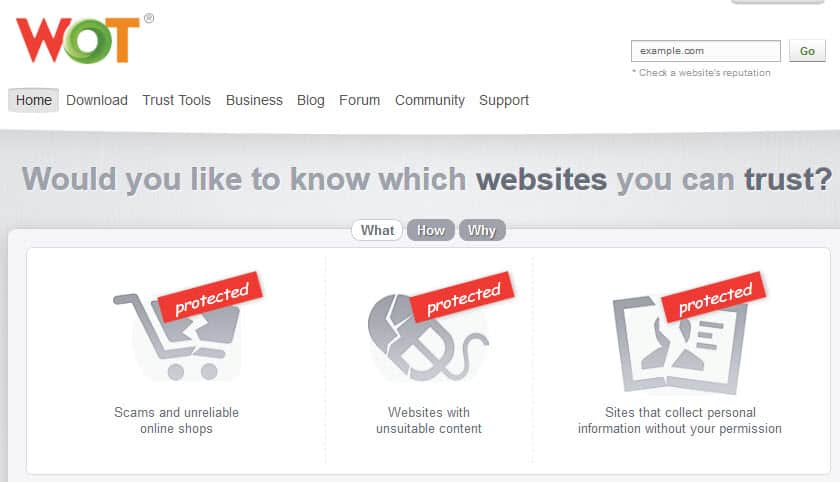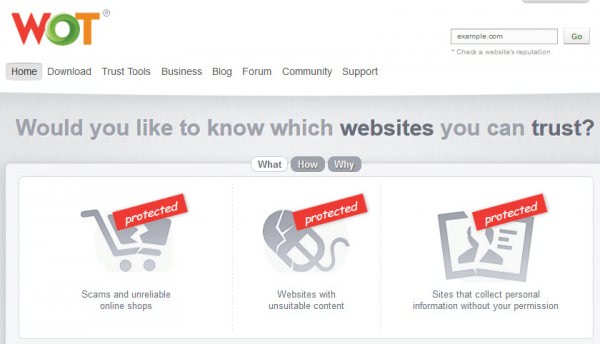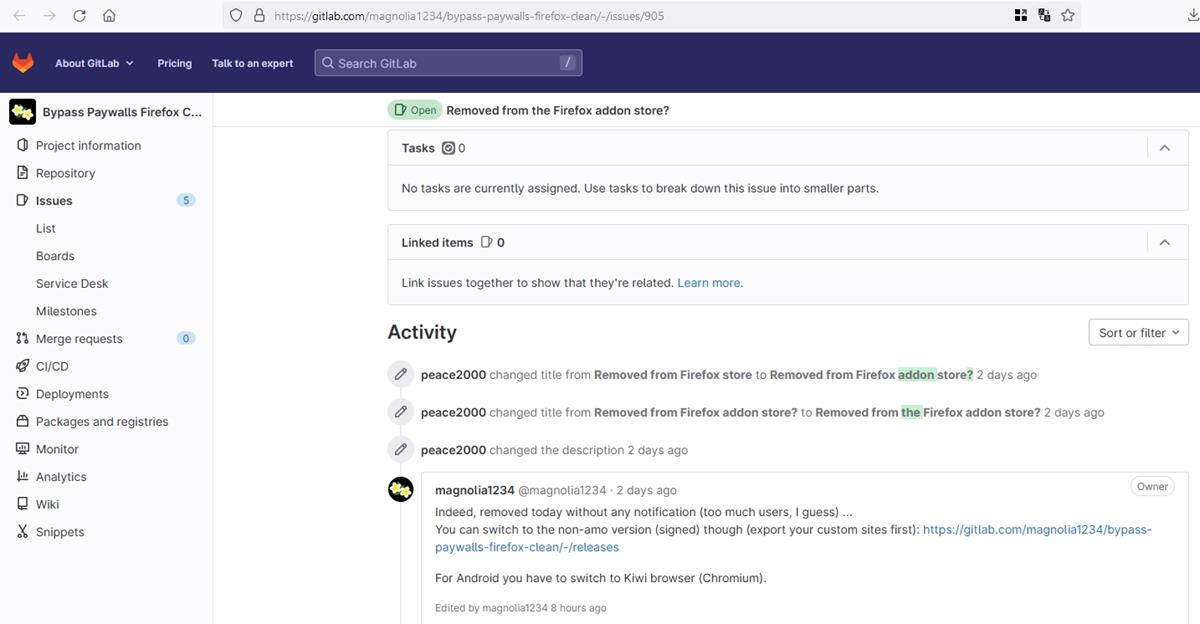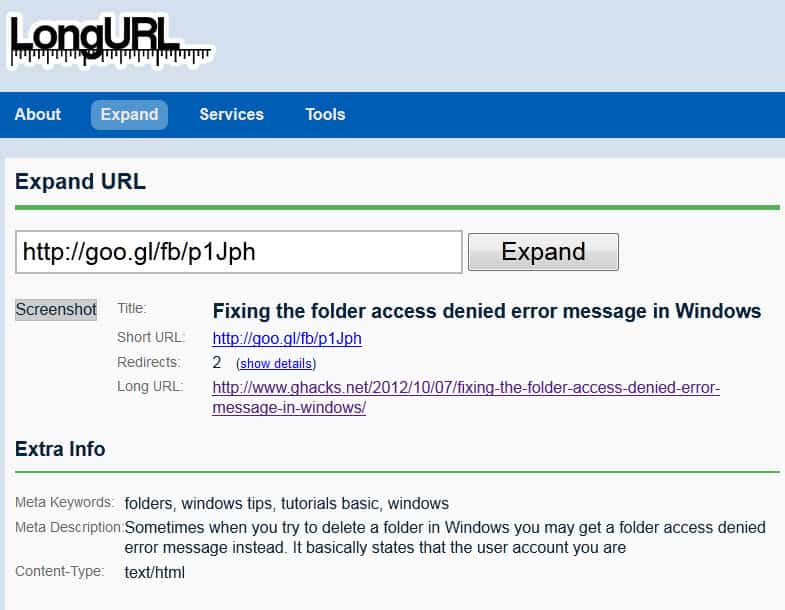Web of Trust: collaborative online security

Most systems which warn of unsafe websites, like OpenDNS and Google, work in mysterious, non-transparent ways and websites are often deemed as unsafe for reasons other than safety. Web of Trust is a Firefox extension which rates the safety of websites based on ratings received by other users of the plug-in.
Users rate websites on their 'Trustworthiness', 'Vendor reliability', 'Privacy' and 'Child Safety'. Information about websites is also gathered from Compete, comments by users and through links from reliable sources (such as Digg, Lifehacker, Open Directory Project and Wikipedia).
Web of Trust sits alongside your navigation buttons, ensuring it has your attention, and should a website be cause for concern the button will change colour. Information is also integrated in webmail and search results, to ensure you won't stumble across an unsafe website.
It currently has information regarding of about 21,000,000 websites based on feedback from the extension's users. It can also be used as parental control, blocking children from websites not suitable for kids.
The website has flaws. It relies on a user spotting a phishing site before someone falls prey to it and naturally, intelligent scammers could trick it through rating their own site. Then again, I imagine this would rarely happen and even when it does, one would expect it to be quickly rectified.
Update: Users who do not want to or can't install the Web of Trust extension for their browser, can alternatively go to the web page of the service, and check a website address there directly.
That's also the only way for webmasters to see user comments that WOT users have left about the site. The Web of Trust browser extension is now available for all major web browsers (Firefox, Chrome, Opera, Internet Explorer and Safari), and as a bookmarklet that needs to be used manually to check a website.
Advertisement






















Excuse my short memory about OpenDNS. I actually blogged on my blog about Phishtank years ago!
OpenDNS is remarkably transparent about its filtering. For phishing, the security is powered by PhishTank, the community site for identifying and confirming phishing sites, where the data is shared publicly. OpenDNS operates PhishTank for its benefit AND for the benefit of anyone else who wants to use the data (it’s free).
For other categories, the optional filtering is powered by the community.
Check any domain’s categorization easily:
http://domain.opendns.com/ghacks.net for example.
Actually, WOT doesn’t rely on users alone to spot dangerous websites. It uses information from several sources (including PhishTank) to quickly react to threats:
http://www.mywot.com/en/blog/responding-to-threats
I’ve been using this for months. It displays a rating icon next links on Google search results and gmail (as well as other similar sites) there is also a toolbar button that displays info on the current website which is a good addition to certificates.